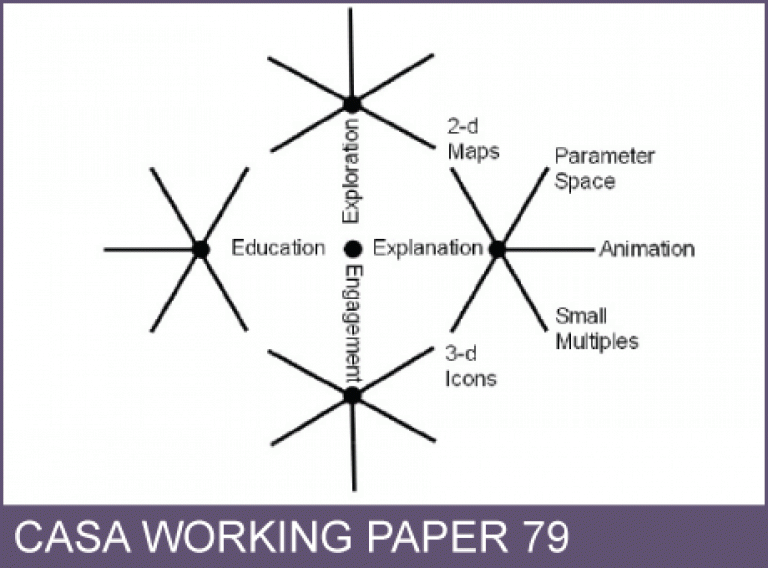CASA Working Paper 79

1 March 2004
Visualization in Spatial Modeling
This paper deals with issues arising from a central theme in contemporary computer modeling - visualization. We first tie visualization to varieties of modeling along the continuum from iconic to symbolic and then focus on the notion that our models are so intrinsically complex that there are many different types of visualization that might be developed in their understanding and implementation. This focuses the debate on the very way of 'doing science' in that patterns and processes of any complexity can be better understood through visualizing the data, the simulations, and the outcomes that such models generate.
As we have grown more sensitive to the problem of complexity in all systems, we are more aware that the twin goals of parsimony and verifiability which have dominated scientific theory since the 'Enlightenment' are up for grabs: good theories and models must 'look right' despite what our statistics and causal logics tell us. Visualization is the cutting edge of this new way of thinking about science but its styles vary enormously with context. Here we define three varieties: visualization of complicated systems to make things simple or at least explicable which is the role of pedagogy; visualization to explore unanticipated outcomes and to refine processes that interact in unanticipated ways; and visualization to enable end users with no prior understanding of the science but a deep understating of the problem to engage in using models for prediction, prescription, and control. We illustrate these themes with a model of an agricultural market which is the basis of modern urban economics - the von Thunen model of land rent and density; a model of urban development based on interacting spatial and temporal processes of land development - the DUEM model; and a pedestrian model of human movement at the fine scale where control of such movements to meet standards of public safety is intrinsically part of the model about which the controllers know intimately.
This working paper is available as a PDF. The file size is 3.44MB.
Authors: Michael Batty, Yichun Xie, Philip Steadman
Publication Date: 1/3/2004
 Close
Close

